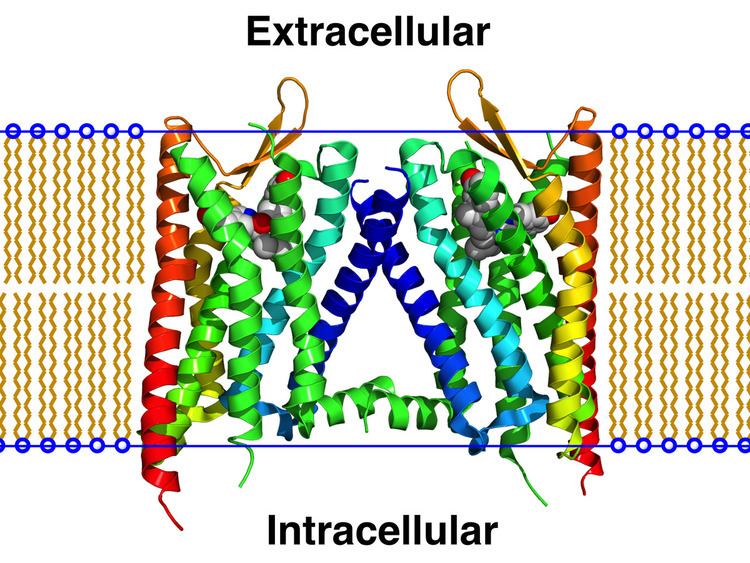 | ||
A GPCR oligomer is a complex of a small number of G protein-coupled receptors (GPCRs) which is held together by covalent bonds or by intermolecular forces. Receptors within this complex are called protomers, while unconnected receptors are called monomers. Receptor homomers consist of identical protomers, while heteromers consist of different protomers.
Contents
Receptor homodimers – which consist of two identical GPCRs – are the simplest homomeric GPCR oligomers. Similarly, receptor heterodimers – which consist of two different GPCRs – are the simplest heteromeric GPCR oligomers.
The existence of receptor oligomers is a general phenomenon, whose discovery has superseded the prevailing paradigmatic concept of the function of receptors as plain monomers, and has far-reaching implications for the understanding of neurobiological diseases as well as for the development of drugs.
Discovery
For a long time it was assumed that receptors transmitted their effects exclusively from their basic functional forms – as monomers. The first clue to the existence of GPCR oligomers goes back to 1975 when Robert Lefkowitz observed that β-adrenoceptors display negative binding cooperativity. At the beginning of the 1980s, it was hypothesized, receptors could form larger complexes, the so-called mosaic form, where two receptors may interact directly with each other. Mass determination of β-adrenoceptors (1982) and muscarinic receptors (1983), supported the existence of homodimer or tetrameric complexes. In 1991, the phenomenon of receptor crosstalk was observed between adenosine A2A (A2A) and dopamine D2 receptor (DRD2) thus suggesting the formation of heteromers. Maggio and co-workers showed in 1993 the ability of the muscarinic M3 receptor and α2C-adrenoceptor to heterodimerize. The first direct evidence that GPCRs functioned as oligomers in vivo came from Overton and Blumer in 2000 by fluorescence resonance energy transfer (FRET) analysis of the α-factor receptor in the yeast Saccharomyces cerevisiae. In 2005, further evidence was provided that receptor oligomizeration plays a functional role in a living organism with regulatory implication. The crystal structure of CXCR4 dimer was published in 2010. While initially thought to be a heterodimer, a 2015 review indicated that the A2A-DRD2 complex is a heterotetramer composed of A2A and DRD2 homodimers (i.e., this heterotetramer is a complex of four GPCRs that is composed of two adenosine A2A receptors and two dopamine D2 receptors).
Consequences of oligomerization
First order GPCR oligomers are monomers, i.e., individual G-protein coupled receptors. Second and higher order GPCR oligomers consist of dimers, trimers, tetramers, and higher complexes. These oligomers have properties that differ from those of the monomers in several ways. The functional character of a receptor is dependent on its tertiary or quaternary structure. Touch receptors located on a larger area or at sensitive places, then, forces, which alter the shape as well as the internal mobility of the reorganized protomers; short, protomers act as allosteric modulators of another. This has consequences for:
